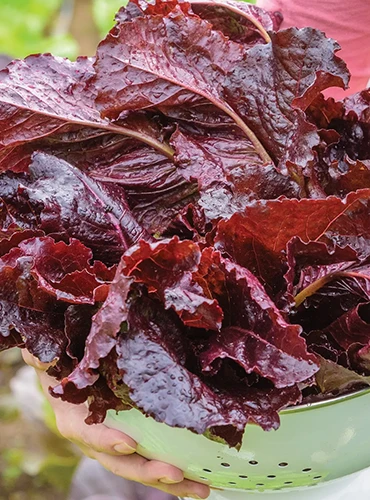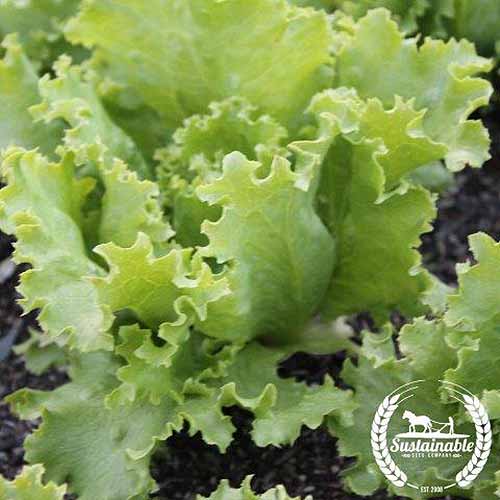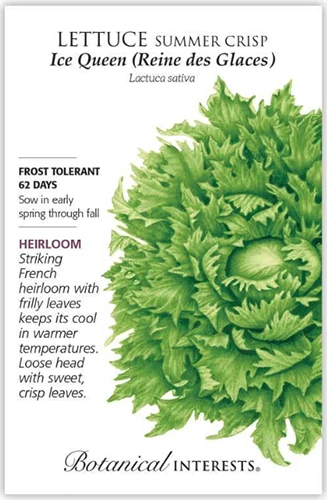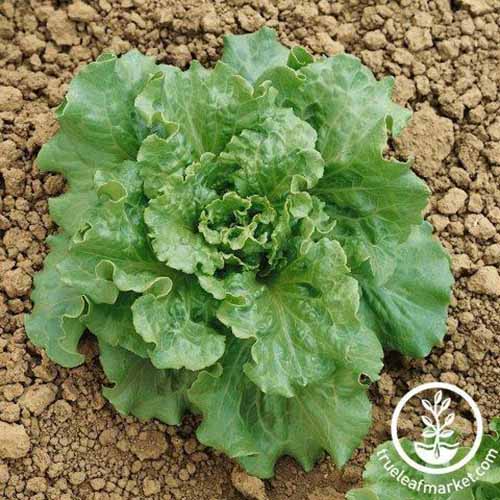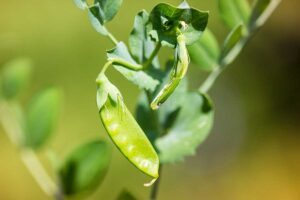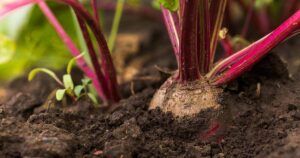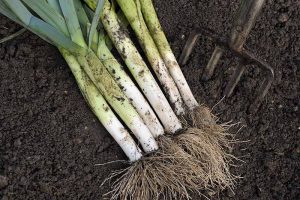Lactuca sativa var. longifolia
Batavian lettuce, also known as summer crisp, is the little veggie that could.
It can tolerate heat better than many other lettuce types but it’s still hardy against frost.
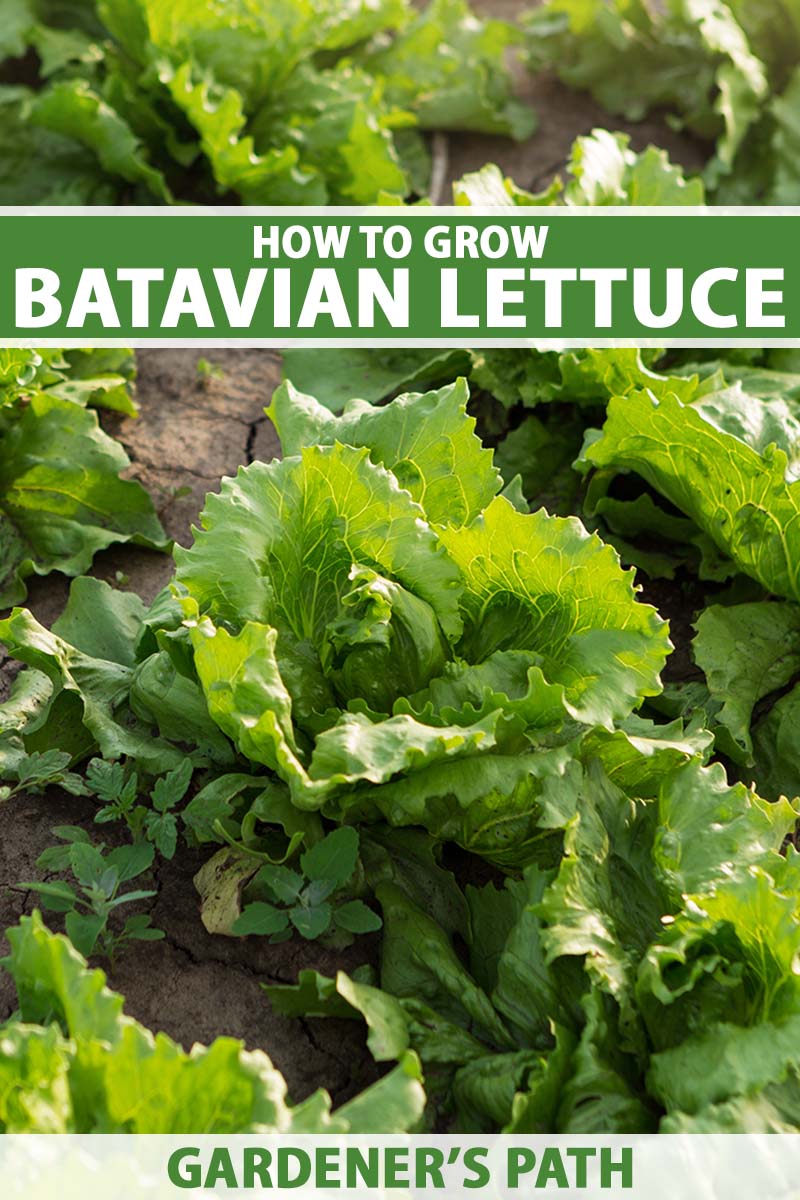
We link to vendors to help you find relevant products. If you buy from one of our links, we may earn a commission.
It can be harvested as a microgreen, baby leaf, cut-and-come-again type, or you can wait for the heads to mature. Oh, and did we mention that it’s more disease resistant than most other lettuces?
There’s a lot to love.
Like other lettuce varieties, it’s easy to grow and quick to mature, so you’ll be chowing down on the crisp, sweet leaves in no time flat.
Want to learn more about these fantastic vegetables? I totally get it. They’re wonderful!
Here’s everything you can expect to learn about in this guide, coming right up:
What You’ll Learn
For a time, Batavian lettuce was far and away the most popular type in the US.
It’s time these nutritional powerhouses made a comeback. But before we fill the ground with summer crisps, let’s chat a bit about where they came from.
Cultivation and History
Batavian (or Batavia) lettuce is a semi-heading type that is somewhere in between iceberg and romaine in terms of texture and flavor.
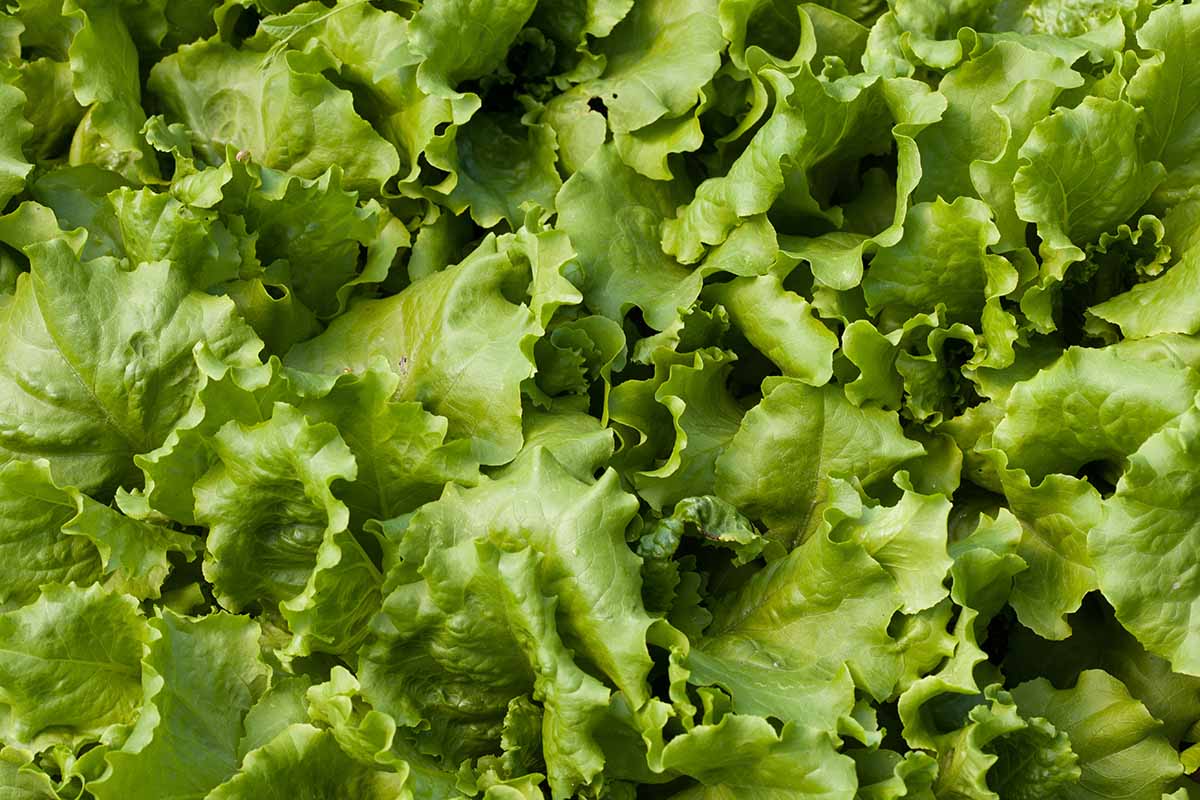
It’s also known as summer crisp or French lettuce. While it’s sometimes a total mystery where plants get their names, the common names “Batavian” and “French” reveal where this plant was initially bred.
Lactuca plant species originated in the Mediterranean region, where they were originally considered a weed, and spread across the planet from there.
The first evidence of cultivation goes way back to ancient Egypt, 6,000 years ago.
Fast forward, and summer crisp types come from the areas of Europe currently known as northern France, Belgium, and the Netherlands.
This type emerged sometime in the 1600s. Today, there are both European and American Batavians.
There are six types of L. sativa plants: butterhead, crisphead, Latin, leaf, romaine, and stem lettuces.
Batavian is a crisphead type, and when we say it’s semi-heading, that’s just a loose term for how tight the heads are.
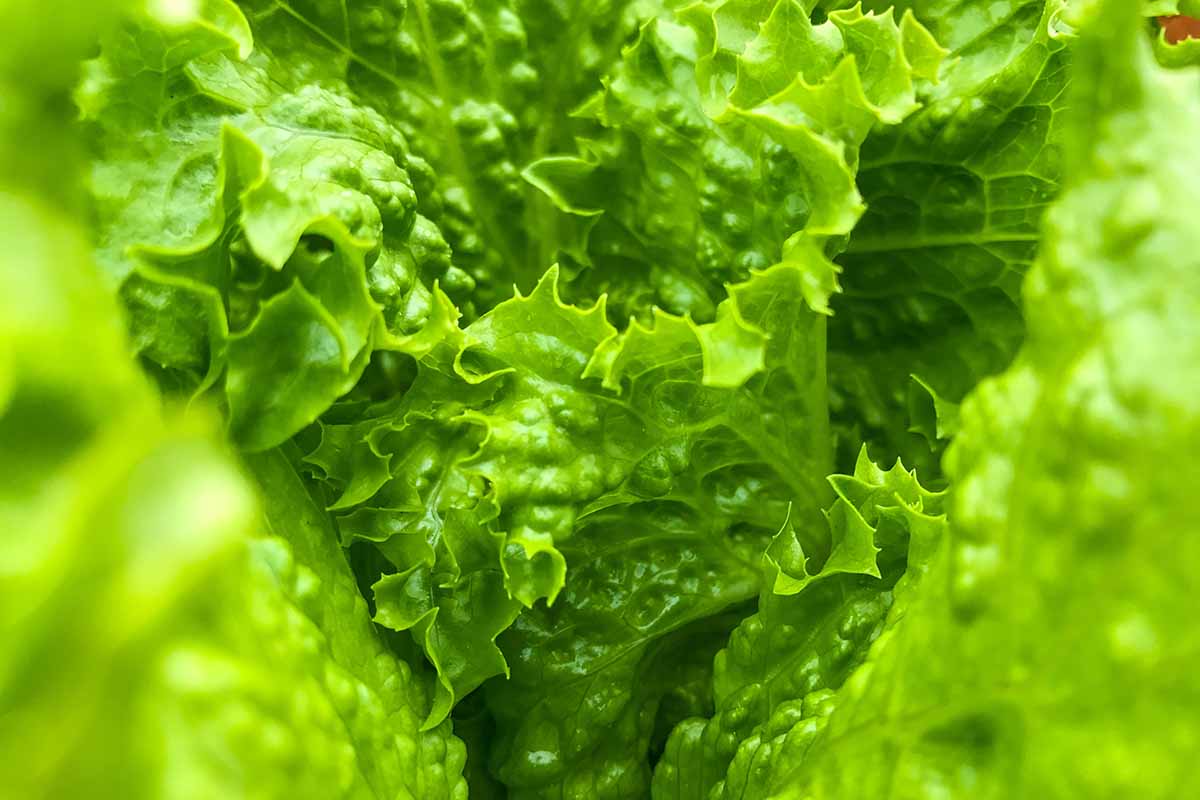
Some lettuces grow tightly packed, almost like cabbage. Others are totally loose, like arugula. Crispheads are somewhere in between the two.
In the early 1900s, American Batavian cultivars were in vogue, with ‘Hanson’ and ‘New York’ being two of the most popular cultivars in the world. The perennially popular iceberg emerged from Batavians in 1894, bred by W. Atlee Burpee & Co.
Don’t confuse this variety with Cichorium endivia, which is sometimes called Batavian escarole or endive.
Batavian Lettuce Propagation
There are two ways to propagate this plant: buy starts or sow seeds. Lettuce is easy to grow from seed, but the main reason you might opt to buy seedlings is to save time.
From Seed
Start your seeds directly in the ground outdoors after the last predicted frost date.
If you don’t usually see about 50 to 80 days of weather under 70°F in the spring, you can start the seeds a little before the last frost date and they will be fine.
These germinate best in soil temperatures around 40°F, but a brief frost won’t hurt them.
You can also start seeds in the fall, about 50 to 80 days before the first predicted frost date.
Before you plant, loosen up your soil down about six inches and work in some well-rotted compost if you need to improve drainage or water retention.
Then poke holes about a quarter-inch deep into the soil spaced six to 12 inches apart, using your finger or a pencil. Place a seed in each hole.
If you’d rather, you can also broadcast the seeds over the soil and lightly press them down. You’ll need to be sure to thin the seedlings out once they start popping up in a week or two.
Sprinkle water onto the soil so you don’t disturb the seeds, and keep the soil moist as you wait for them to germinate.
From Seedlings
Batavian lettuce is extremely popular and you can always find at least one or two cultivars at nurseries in the spring.
To plant starts, prepare the soil by loosening it up down to six inches and working in some compost, if necessary, to improve drainage and water retention.
Dig a hole the same size as the growing container and gently remove the seedling from its pot.
Place it in the hole and firm the soil up around it, taking care to keep the plant at the same depth it was in the growing container.
Seedlings should be planted six to 12 inches apart, depending on their predicted mature size.
Water the soil well.
How to Grow Summer Crisp Lettuce
Since these plants were bred in some of the decidedly cooler and wetter regions of Europe, that gives us a good guide to what kind of conditions these vegetables need.
Anyone can grow these plants, but you’ll need to adapt depending on the type of climate you live in.
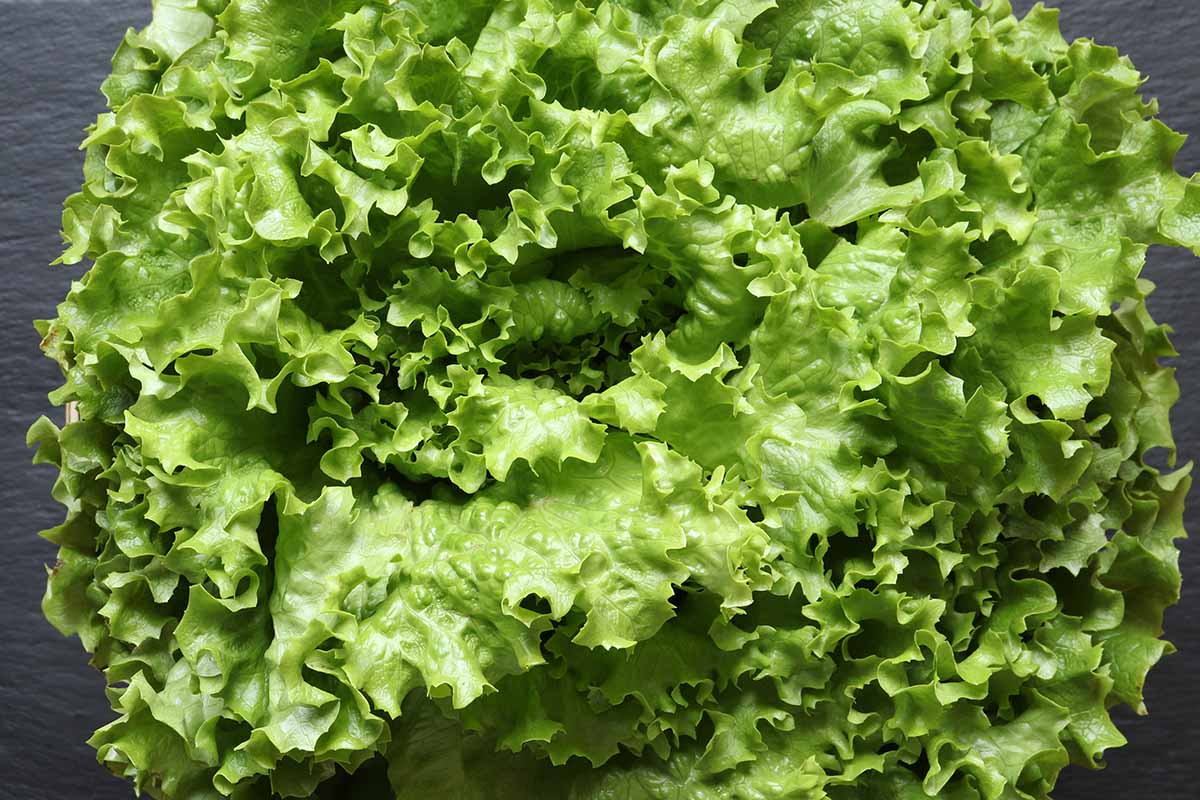
You need at least seven weeks for the heads to mature, so as long as you have about 50 to 80 days under about 70°F, you can grow these plants.
Some cultivars are more heat tolerant and won’t bolt until temperatures start reaching the mid-80s.
On the other end of the scale, these plants can tolerate a brief heavy frost and temperatures in the 20s, which is why they’re popular as a winter crop in temperate regions.
They also make a nice winter crop in warm regions.
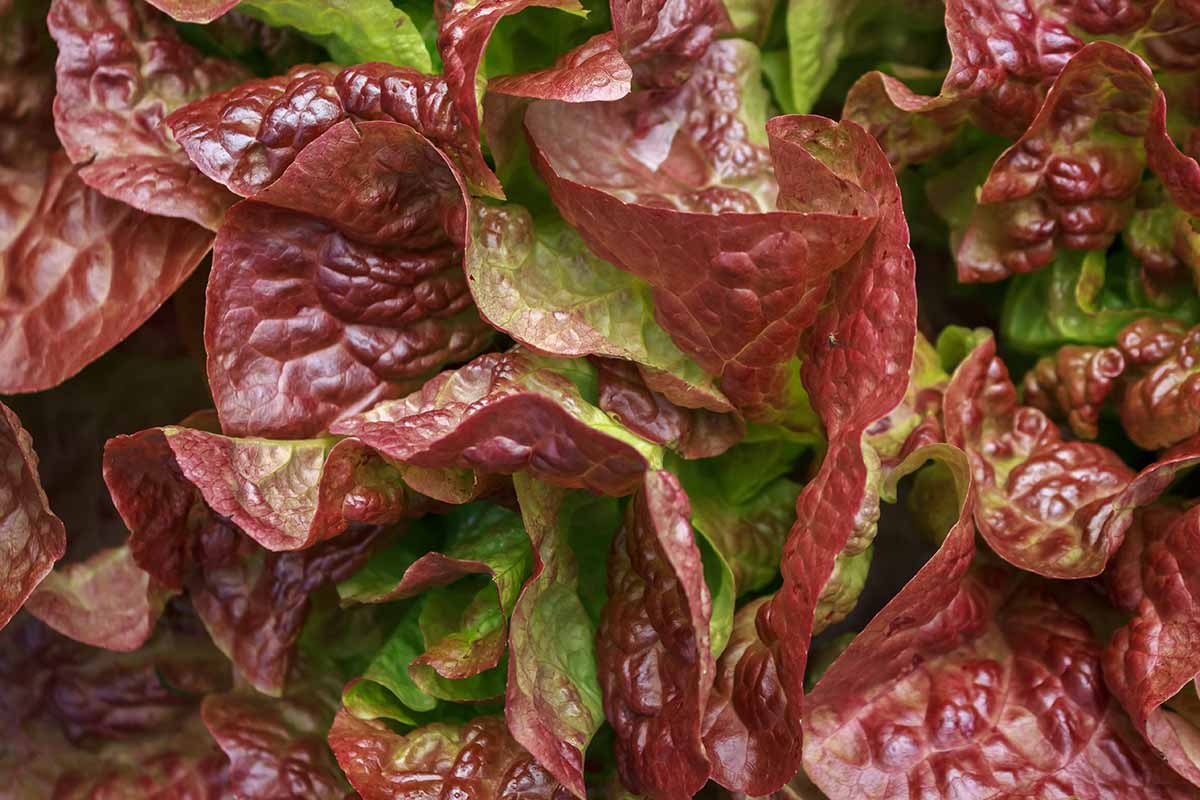
Batavian lettuce does best in well-draining, loose, rich soil that retains water well. It needs to have a slightly acidic pH of around 6.0 to 6.5.
Plant your lettuce in a spot that receives full sun. Less ideally, you can also grow it in partial sun.
Keep the soil moist as these plants grow. Because they have shallow roots, you should add water as soon as the surface of the soil feels dry to the touch.
There’s no need to fertilize or pinch the leaves, but be sure to keep weeds well away. Those uninvited plants will steal nutrients from your crops and they can harbor pests and diseases.
Consider growing your lettuce near other helpful plants like alliums, beets, calendula, carrots, cilantro, nasturtiums, parsnips, and radishes. Just stay away from brassicas.
You don’t want them sharing diseases and pests with your Batavian plants.
Growing Tips
- Plant in full sun or partial shade.
- Keep the soil consistently moist.
- Keep weeds out of the garden.
Batavian Lettuce Cultivars to Select
There are dozens of cultivars out there and new ones coming to the market all the time.
You can’t go wrong experimenting with a new one since there’s so little money, work, and time involved. But if you want a sure thing, these options are tried and true.
Burgundy Delight
I mean, there’s nothing wrong with the slightly crinkled leaves on somewhat loose heads, with their vibrant crunch and sweet flavor.
But ‘Burgundy Delight’ delights for other reasons. The dark reddish-purple leaves are beautiful whether you slap them on a sandwich or toss them in a salad.
You can have vibrant, flavorful heads in under 70 days by heading to Burpee to purchase a pack of about 500 seeds.
Great Lakes
‘Great Lakes’ was a collaborative effort between the United States Department of Agriculture and the Michigan Agricultural Experiment Station.
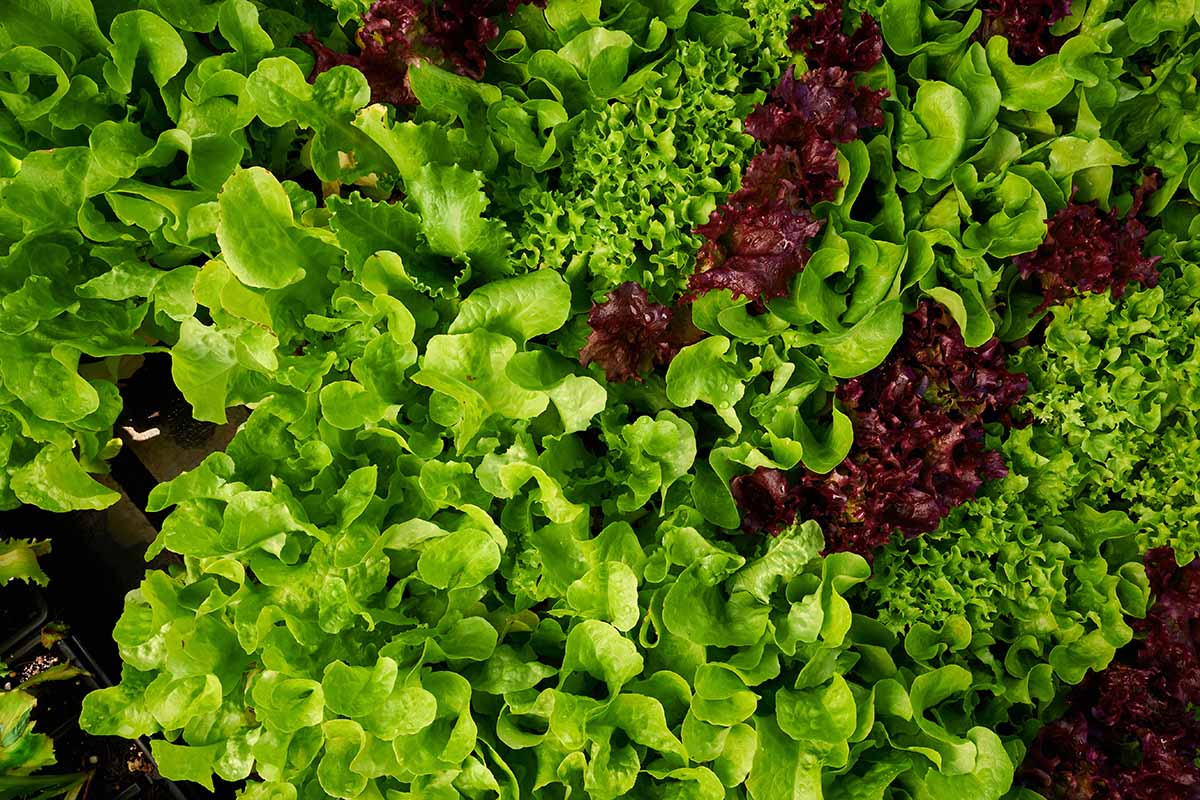
It was introduced in 1941 and is considered the first “modern” iceberg type.
But despite that, it’s still usually classified as a Batavian, with a large, somewhat dense head and deliciously crisp leaves.
It resists tip burn, won’t easily bolt in the heat or cold, and produces reliably even when the weather doesn’t cooperate.
For half a century, it was the most popular commercially grown cultivar of any lettuce, peaking at 95 percent of the market. It was only knocked off its pedestal when pre-packaged loose leaves took over in the mid-70s.
All that aside, this is a fantastic cultivar and totally deserving of a comeback, though you shouldn’t feel too bad for it. ‘Great Lakes’ is still quite popular with home growers.
If you want to be a part of history by growing this fantastically tasty cultivar with its perfectly crinkly leaves, run to True Leaf Market for a gram, quarter ounce, ounce, four-ounce, one-pound, or five-pound package of seeds.
Plant them and expect your harvest in about 75 days.
Ice Queen
‘Ice Queen,’ or ‘Reine des Glaces,’ is a royally marvelous French heirloom that is regularly lauded as one of the best Batavia lettuces.
It has green, frilled leaves on the outside and crisp, slightly bitter leaves at the center.
It’s also cold and heat tolerant, and extremely slow to bolt. Cut and come again, grow baby greens, or harvest the mature heads at about 80 days.
Snag a gram of seeds at Botanical Interests.
Learn more about growing ‘Ice Queen’ in our guide.
Muir
‘Muir’ is so heat tolerant that it almost seems it might not truly be a variety of lettuce. Is it actually a variety of Malabar spinach in disguise? But it’s not!
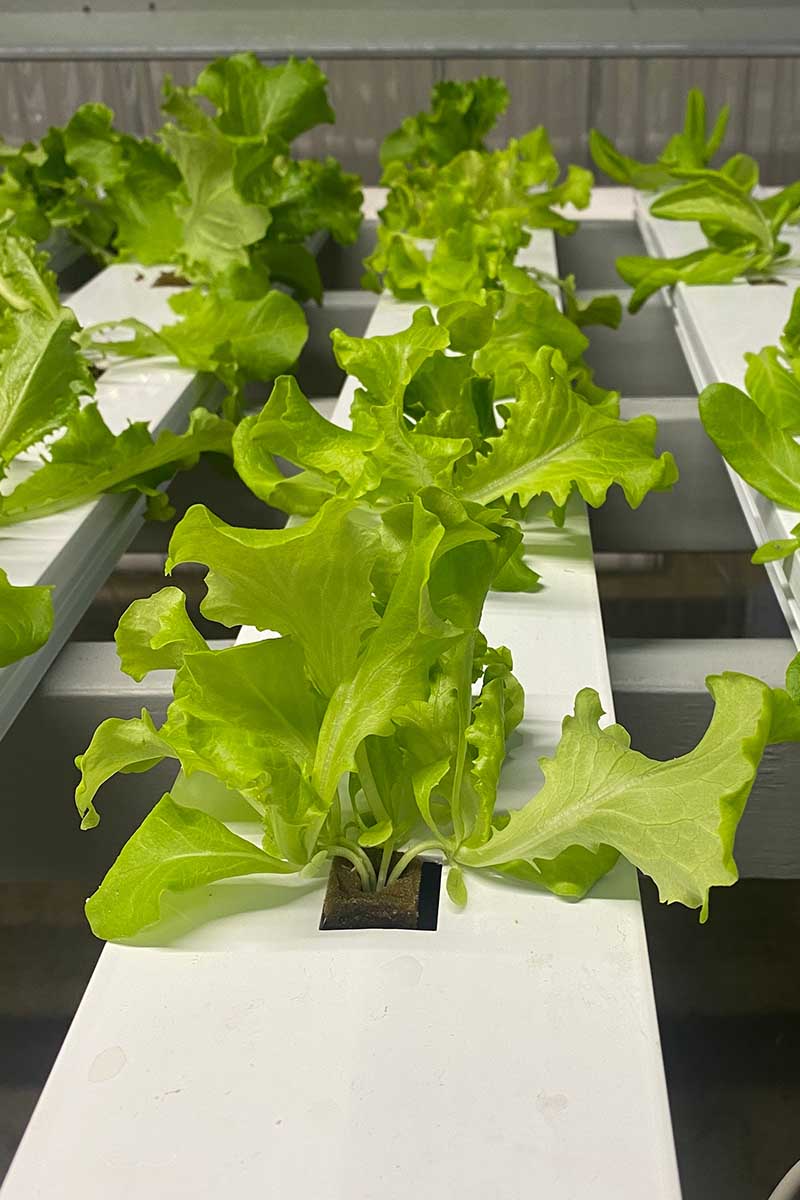
It has semi-dense heads with extremely wavy leaves that are perfect for capturing oily salad dressing.
It also resists diseases like downy mildew and lettuce mosaic virus, and it’s extremely quick to mature at 50 days.
Nevada
‘Nevada’ has the killer combination of a velvety texture with a refreshing crunch packed into a uniform, loose head.
It’s also less likely to bolt or experience tip burn than most other lettuces, plus it’s resistant to common diseases like downy mildew and lettuce mosaic virus.
This open-pollinated cultivar is ready to harvest after about six weeks and stores for a good long while.
It’s obvious why this one is so popular. If you’d like to bring it to your garden, True Leaf Market carries gram, quarter-ounce, ounce, and four-ounce packets of seed.
Managing Pests and Disease
While any Lactuca species can technically contract the same diseases, Batavian types are generally resistant to most issues.
Some cultivars resist the oh-so-common downy mildew, while others are susceptible.
If you want to avoid downy mildew, pick one of the many resistant cultivars. For the rest of the potentially nasty diseases, read our guide to learn how to identify and get rid of them.
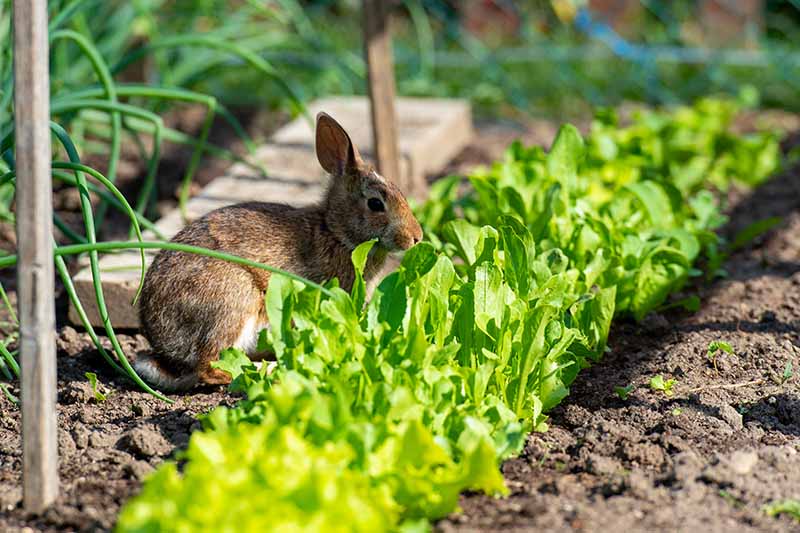
When it comes to pests, herbivores like deer and rabbits, and invertebrates like aphids and slugs are common issues. We have a full guide to walk you through these problems.
Harvesting Summer Crisp
I love harvesting Batavian lettuce. Clipping the heads is so satisfying. Once they’ve reached their mature size, use a knife or clippers to cut through the base of the plant right above the soil level.
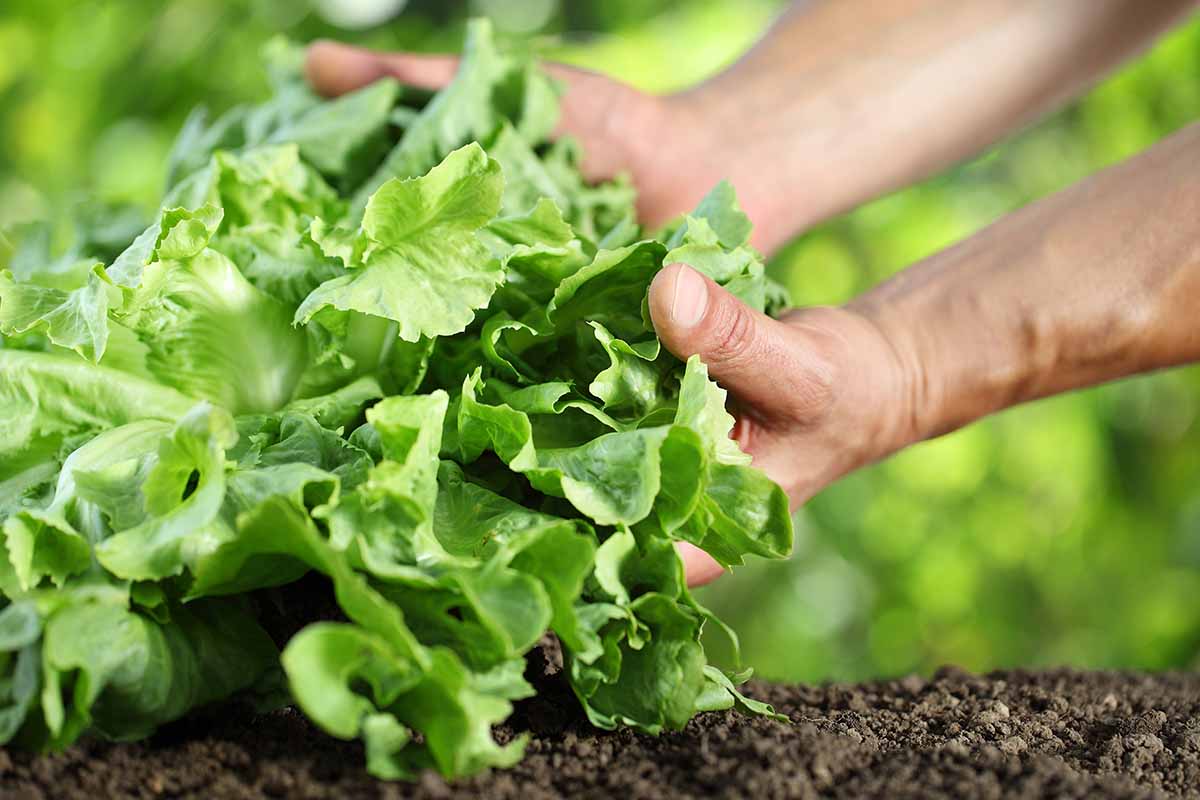
You can also harvest individual leaves as they mature, using a clean pair of scissors.
To store your lettuce, wrap it in a linen or cotton cloth and put the package in your vegetable crisper drawer. It can last up to a week this way.
Quick Reference Growing Guide
| Plant Type: | Annual vegetable | Tolerance: | Some heat, frost |
| Origins: | Mediterranean region, later France, Belgium, Netherlands | Maintenance: | Low |
| Hardiness (USDA Zone): | 2-11 | Soil Type: | Loose, rich |
| Season: | Spring, fall, winter | Soil pH: | 6.0-6.5 |
| Exposure: | Full to partial sun | Soil Drainage: | Well-draining |
| Time to Maturity: | Up to 80 days | Companion Planting: | Alliums, beets, calendula, carrots, cilantro, nasturtiums, parsnips, radishes |
| Spacing: | 6-12 inches | Avoid Planting With: | Brassicas, fennel |
| Planting Depth: | <1/4 inch (seeds), same depth as container (seedlings) | Order: | Asterales |
| Height: | Up to 12 inches | Family: | Asteraceae |
| Spread: | Up to 18 inches | Genus: | Lactuca |
| Growth Rate: | Fast | Species: | Sativa |
| Water Needs: | Moderate to high | Variety: | Longifolia |
| Common Pests:: | Aphids, beetles, caterpillars, crickets, deer, fungus gnats, rabbits, slugs, snails, voles | Common Diseases: | Bacterial leaf spot, bottom rot, damping off, downy mildew, lettuce mosaic virus |
What’s Not to Love?
Batavian lettuce is fantastic for so many reasons. Its versatility as a head or loose-leaf type makes it a useful addition to the kitchen garden.
But with its disease resistance, heat and frost tolerance, and ease of growing, it’s pretty hard not to love.

How do you use up your homegrown lettuce? Do you enjoy the baby leaves in salads? Or do you wait for it to grow big and use it to make soup?
I’d love to hear your recipe suggestions. Share with us in the comments section below.
We have a lot more lettuce goodness if you can’t get enough of growing these green wonders. If you found this guide useful, you’ll love these:
